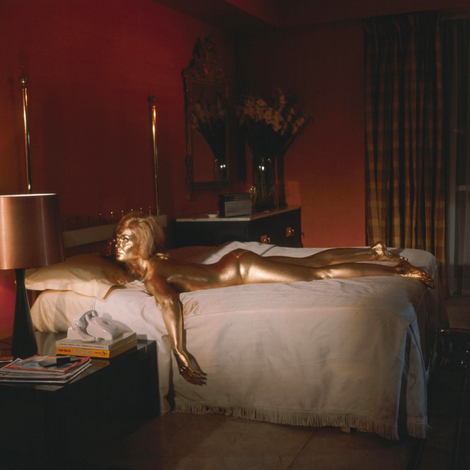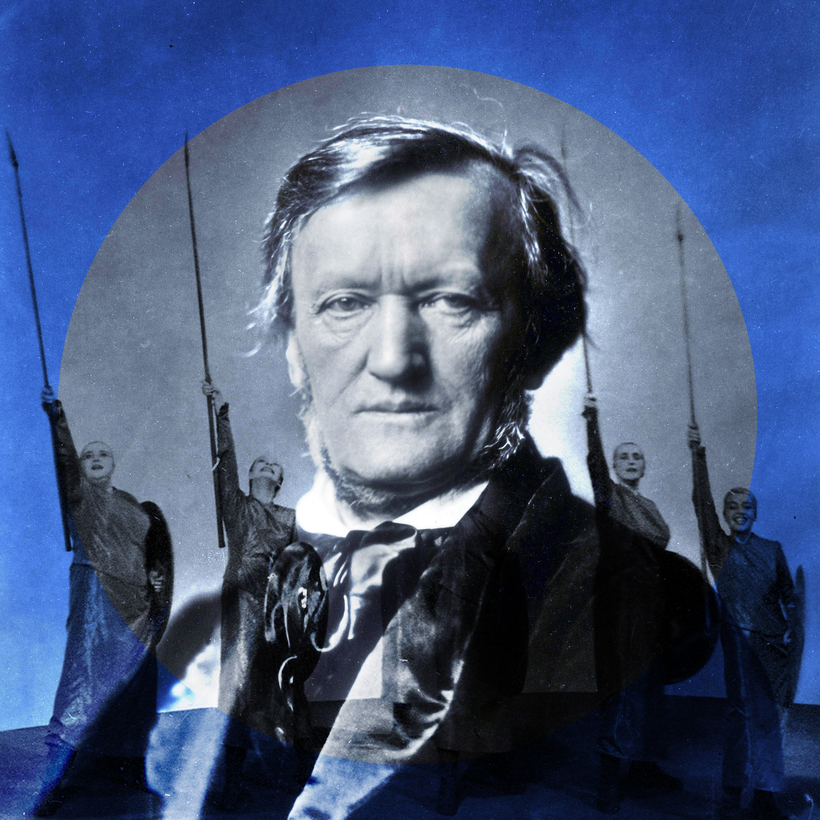The small Bavarian town of Bayreuth had never seen anything like it. For three weeks in August 1876, its broad streets, noble houses, and fountained squares were filled with people not only from across Germany but also from France, Britain, Italy, Scandinavia, Russia, and the Americas. “In the flat next to me there lives a composer of operas, across the corridor a famous singer, below me a celebrated music director and above me a well-known critic,” wrote Edvard Grieg, moonlighting as a journalist. “Sitting here I can hear all around me Wagnerian themes being hummed, sung, yodeled and shouted up from the garden. Going to the window I can see Valkyries, Rhinemaidens, giants and dwarfs, gods and mortals, all disporting themselves under the shade of the trees.”
The occasion for this great influx of opera aficionados and mythological characters into Upper Franconia was, of course, the first complete performance of Richard Wagner’s Der Ring des Nibelungen. As another composer, Pyotr Ilych Tchaikovsky, informed the readers of the Russian Register: “This colossal work by the most renowned of all living composers is—irrespective of the success which falls to its lot this summer—without any doubt an exceptionally remarkable phenomenon, which in some way is bound to leave behind a blazing trail in history.”

He was not wrong. As even contemporaries appreciated, The Ring of the Nibelungen constitutes the most ambitious project in Western art. A cycle of four “music dramas”—Das Rheingold, Die Walküre, Siegfried, and Götterdämmerung—intended to be performed on successive nights and totaling some 15 hours of opera, it combines tragedy with philosophy, drama with psychology, myth with naturalism. The libretto, derived from Norse legend, Greek mythology, and Feuerbachian philosophy, is the composer’s own and is, in and of itself, a work of striking originality. And yet it is in the music that Wagner’s genius shines forth: in a score that conveys the essence of heroism, greed, ambition, suffering, love, and redemption.
The “Ring” has spawned several cottage industries. Attendees of the first Bayreuth Festival could purchase pipes carved to resemble the composer’s head, as well as hats, cravats, wine, and cigars, all in the “Wagner brand.” More enduring has been the steady stream of literature that has sought to explain and interpret this masterpiece; a work that, according to George Bernard Shaw, encapsulates “the whole tragedy of human history.”
It is no disservice to Michael Downes, a conductor and director of music at the University of St. Andrews, to note that his contribution, Wagner and the Creation of the Ring, is on the lighter side of Wagnerian literature. Indeed, it is one of this book’s strengths that it is succinct and manages to include paragraphs of musical analysis, as well as the philosophical ideas that underpin the drama, without becoming abstruse. As Downes states in his preface, this is not intended to be the “last word” on the “Ring” (a phenomenon which will surely never occur) but “a first word … a way into this imposing work for those figuring out how—or whether—to approach it.” As an introduction to the cycle, it may be warmly recommended.
As the title implies, Wagner and the Creation of the Ring is dedicated to explaining how the “Ring” came into being; how a poem entitled Siegfrieds Tod (Siegfried’s Death), which Wagner read to friends in Switzerland in the summer of 1849, expanded over the next three years into a text for four dramas which he then spent the subsequent 21 years (including one major hiatus) setting to some of the most profound and visceral music ever written.
The ingredients of the drama are sketched. Wagner may have wanted his music to be quintessentially German (at least after his rejection by Parisian opera-goers), but as Downes reminds us, the “Ring” draws on an array of sources, including Greek tragedy (in particular the Oresteia) and Christian theology. It was the philosopher and anthropologist Ludwig Feuerbach who provided the composer with the idea that human beings create gods, not the other way round, while it was the arguments of Schopenhauer that convinced Wagner of the supremacy of music over all other art forms, causing him to alter the relationship between words and notes in the latter dramas of the cycle, as well as in Tristan und Isolde and Parsifal.

The story of how Wagner’s specially designed theater at Bayreuth came to be built and the first “Ring” cycle performed is engagingly told. As Downes relates, Wagner was an exacting director. “There was nothing he hated so much as blurred, indistinct words, notes or gestures.” The singers not only had to act well but to understand “the relationship of their individual parts to the musical fabric of the cycle.” The composer’s advice to the cast on the opening night of the first performance of the complete “Ring” ended with the words: “Be true to me, you dear ones.”
The “Ring” cycle’s subsequent life is summarized in the final chapter. Although Wagner’s music was appropriated by the Nazis—an exploitation that contained an element of justice, considering the composer’s notorious anti-Semitism—this did not lead to it being jettisoned by subsequent generations. Bayreuth reopened its doors in 1951, and in 1958 the Hungarian-born (and Jewish) conductor Georg Solti began to record the complete “Ring” cycle for Decca.
One hundred and fifty years on from its first performance at Bayreuth, new productions of the “Ring” are still being commissioned all over the world. Many will be deliberately ugly, political, surreal, or all three. Some audience members will be put off. They will be confused—and rightly so—by the disconnect between the music and the actions onstage. This is a tragedy as well as a travesty of Wagner’s operatic concept. Of course, modern productions do not have to replicate the sets and costumes of the original Bayreuth production. But they should remain true to the intentions of the artist, conveyed through words, stage directions, and, above all, music. Michael Downes’s book should be read by Wagner directors and Wagner virgins alike.
Tim Bouverie is the author of Appeasement: Chamberlain, Hitler, Churchill, and the Road to War and Allies at War: How the Struggles Between the Allied Powers Shaped the War and the World


